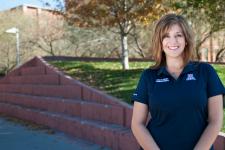Leigh Weisenburger of Bates College Answers Six Questions
Posted on Mon, 01/06/2014 - 11:47
Bates College was founded in 1855 by abolitionists who believed strongly in freedom, civil rights and the importance of a higher education for all who could benefit from it. Several of the college's earliest students were former slaves. And its religion department was formed when the school merged with the Parsonfield's Cobb Divinity School, whose seminary served as a stop on the Underground Railroad.
That mission of inclusivity is carried on today at the Lewiston, Maine, private liberal arts school -- there are no sororities or fraternities on campus, student organizations are open to all, and 95% of students live on campus, with residential life an important part of the academic experience.








